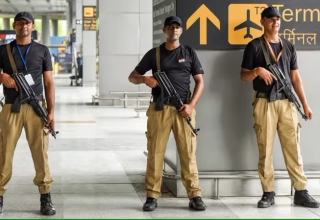
Last updated on May 11th, 2021 at 08:41 am
As the number of reported cases of coronavirus disease in 2019 (COVID-19) rises daily in the Philippines, hundreds of frontliners such as physicians, janitors, and nurses work together to save lives and avoid the spread of the virus.
In the hospital setting, healthcare providers are susceptible to virus due to their continuous contact with every patient giving their unwavering time of duty that will also give them a threat of lowering their immune system.
A Filipino engineer has developed a service assistant robot to help medical frontliners care for their patients during the pandemic to reduce the risk of infection with the novel coronavirus
Anthony James Bautista, assistant professor and engineer at the University of Santo Tomas (UST), invented the robot that now works in the hospital at the university.
The robot is a telepresence device that provides medication and allows health care staff to communicate remotely with patients. It can be easily repeated for other hospitals
The innovator was drawing an inspiration from his talk with a doctor to create this robot.
Dr. Rodrigo Calalang Santos of the Pasig Doctors Medical Center spoke to the engineer and express that there is a need for physicians to remotely connect and administer medication to patients to minimize communication with them.
Having robotic experience, Santos asked Bautista to build a robot that would be able to support the medical frontliners.
The problem was that due to the enhanced Group quarantine, no components were available.
But they worked hard for five days with readily available equipment in his workshop, and invented the computer.
LISA
Robot for Logistic Indoor Service Assistant Robot, the system operates on a first stage automation, or remote control used by the medical frontliners.
The telepresence robot has a tablet with software that can be used for communication, and a box that contains the patient’s medication required.
Patients use the tablet directly so that they protect it with cotton, and are then disinfected.
Physicians no longer have to touch patients directly with the robot for more than 5 meters and may reduce the usage of personal protective equipment. Because of this, the Department of Science and Technology supported the project.
Further modification will increase the improvement of it’s capabiity to offer healthcare service to the people and a big help for frontliners.























